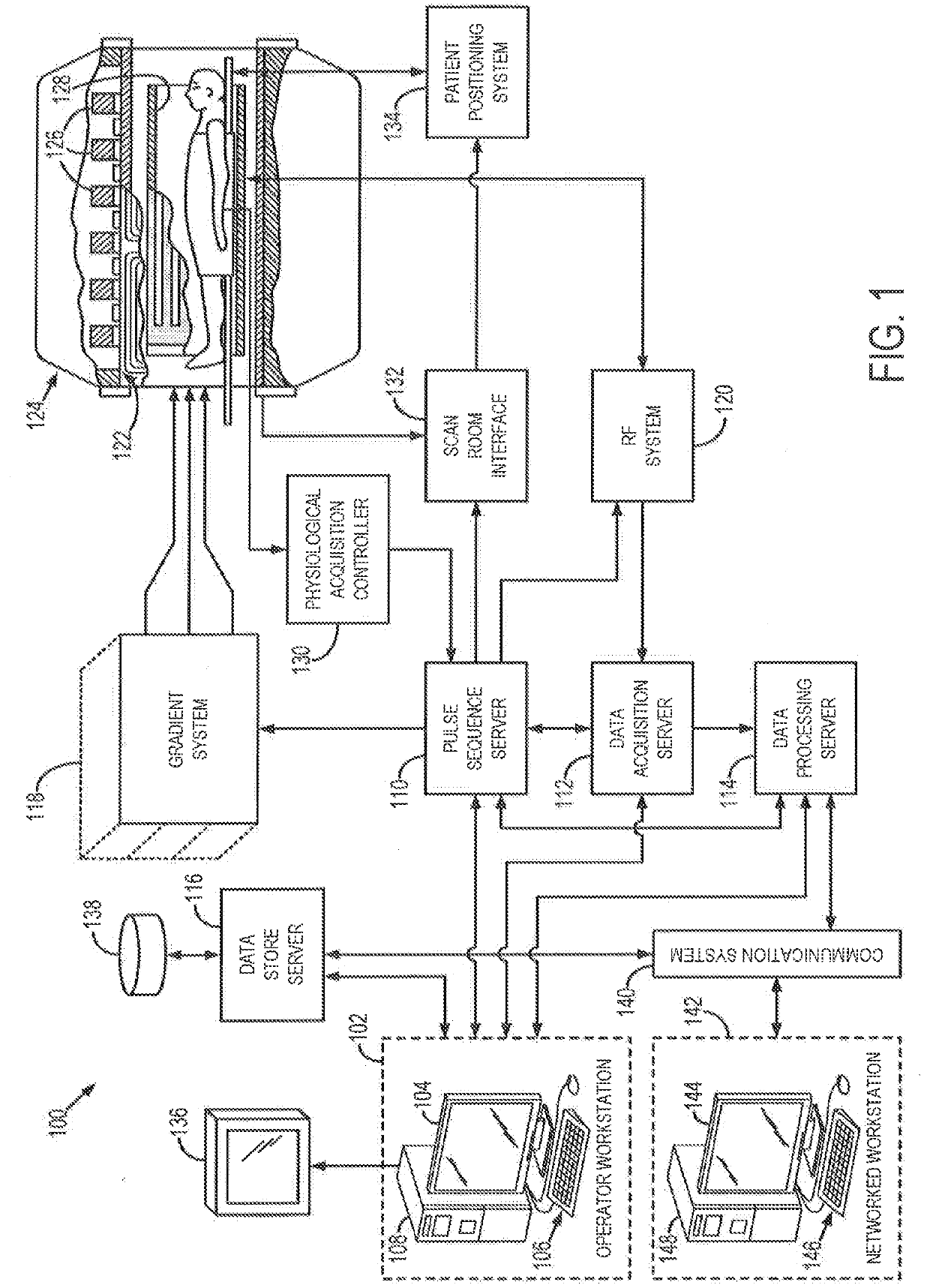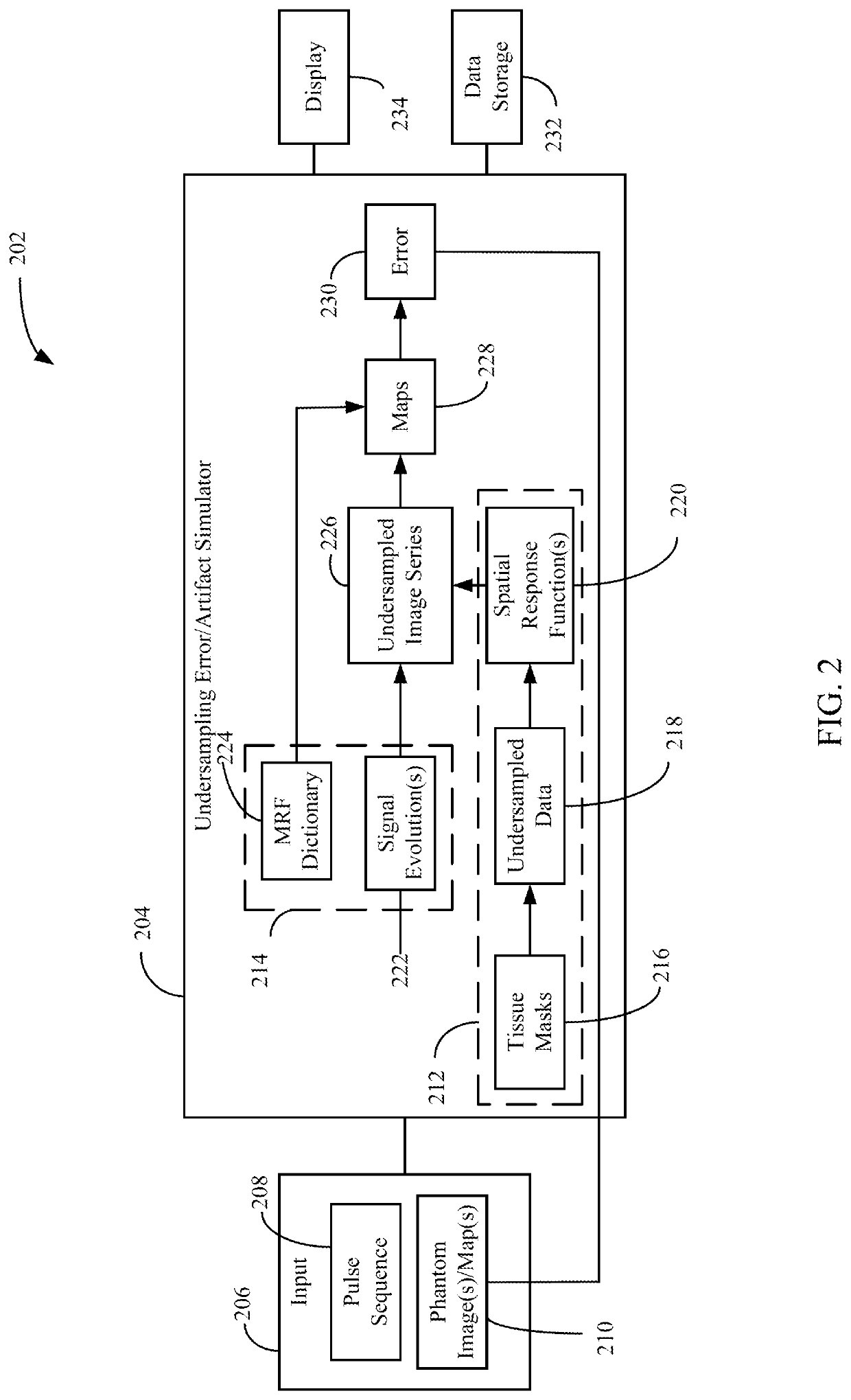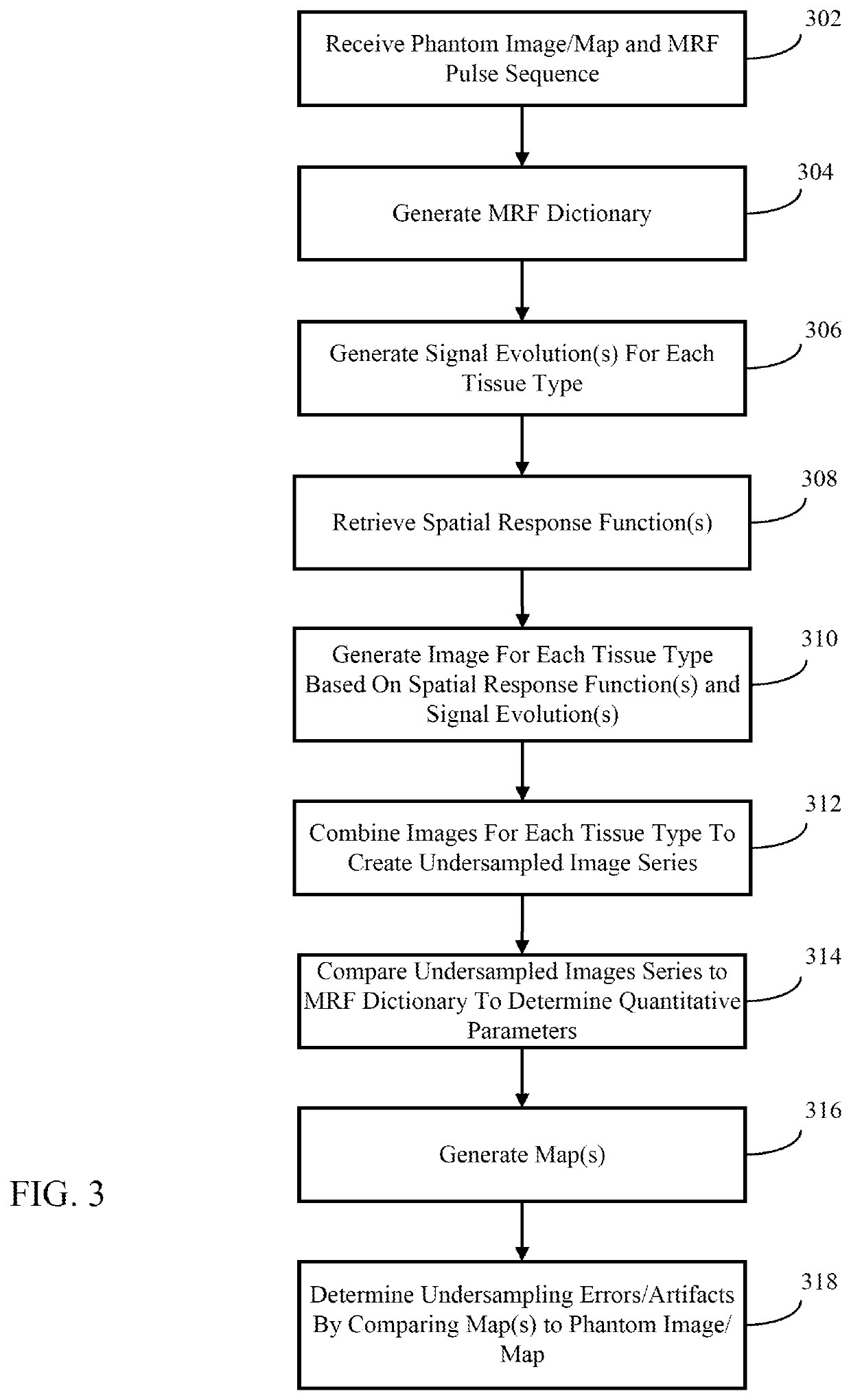System and method for determining undersampling errors for a magnetic resonance fingerprinting pulse sequence
a technology of magnetic resonance fingerprinting and pulse sequence, applied in the field of system and method for determining undersampling errors for magnetic resonance fingerprinting pulse sequence, can solve the problems of limited patient tolerance, computational cost, and inability to accurately represent non-cartesian undersampling artifacts, etc., to achieve the effect of rapid sequence optimization and evaluation, and computational cost saving
- Summary
- Abstract
- Description
- Claims
- Application Information
AI Technical Summary
Benefits of technology
Problems solved by technology
Method used
Image
Examples
Embodiment Construction
[0017]Magnetic resonance fingerprinting (“MRF”) is a technique that facilitates mapping of tissue or other material properties based on random or pseudorandom measurements of the subject or object being imaged. In particular, MRF can be conceptualized as employing a series of varied “sequence blocks” that simultaneously produce different signal evolutions in different “resonant species” to which the RF is applied. The term “resonant species,” as used herein, refers to a material, such as water, fat, bone, muscle, soft tissue, and the like, that can be made to resonate using NMR. By way of illustration, when radio frequency (“RF”) energy is applied to a volume that has both bone and muscle tissue, then both the bone and muscle tissue will produce a nuclear magnetic resonance (“NMR”) signal; however, the “bone signal” represents a first resonant species and the “muscle signal” represents a second resonant species, and thus the two signals will be different. These different signals fro...
PUM
 Login to View More
Login to View More Abstract
Description
Claims
Application Information
 Login to View More
Login to View More - R&D
- Intellectual Property
- Life Sciences
- Materials
- Tech Scout
- Unparalleled Data Quality
- Higher Quality Content
- 60% Fewer Hallucinations
Browse by: Latest US Patents, China's latest patents, Technical Efficacy Thesaurus, Application Domain, Technology Topic, Popular Technical Reports.
© 2025 PatSnap. All rights reserved.Legal|Privacy policy|Modern Slavery Act Transparency Statement|Sitemap|About US| Contact US: help@patsnap.com



